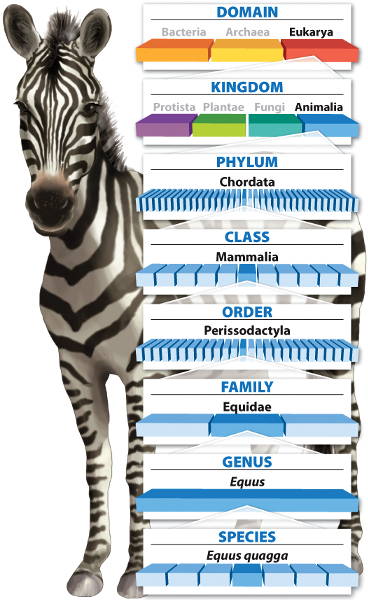 Classification
Classification
In the Linnaean classification,
organisms are placed in hierarchical groups based on appearance.
Organisms in lower groups bear more similarity in appearance.
Each organisms is identified by a
binomial scientific name: its Genus and species.
For example, Equus quagga for the Zebra, which also belongs in:
- Family Equidae,
- Order Perissodactyla,
- Class Mammalia,
- Phylum Chordata,
- Kingdom Animalia,
- Domain Eukaryota.
The binomial name for humans is Homo sapiens.

 The origin and diversification of life on earth
The origin and diversification of life on earth 
 The origin and diversification of life on earth
The origin and diversification of life on earth 